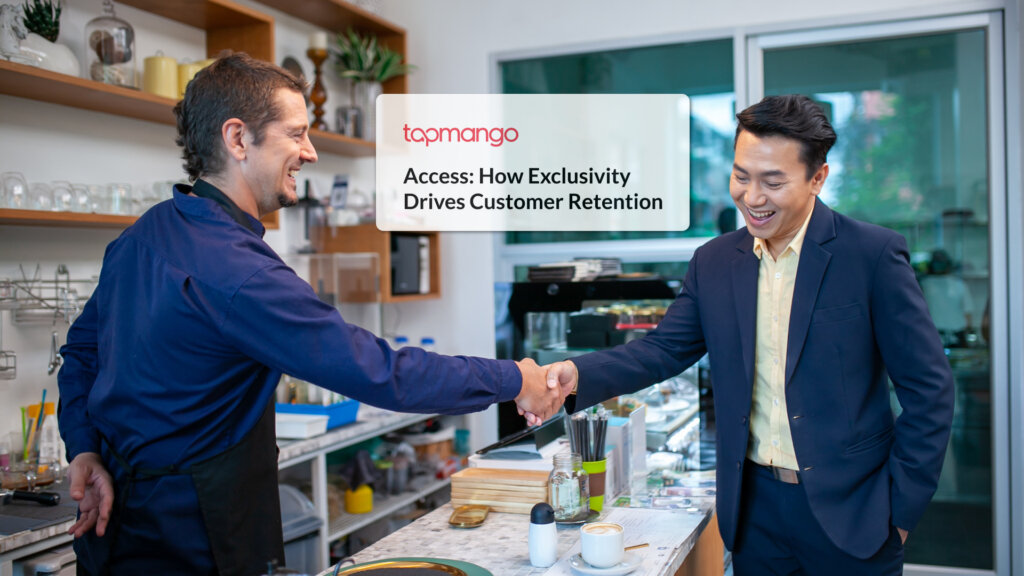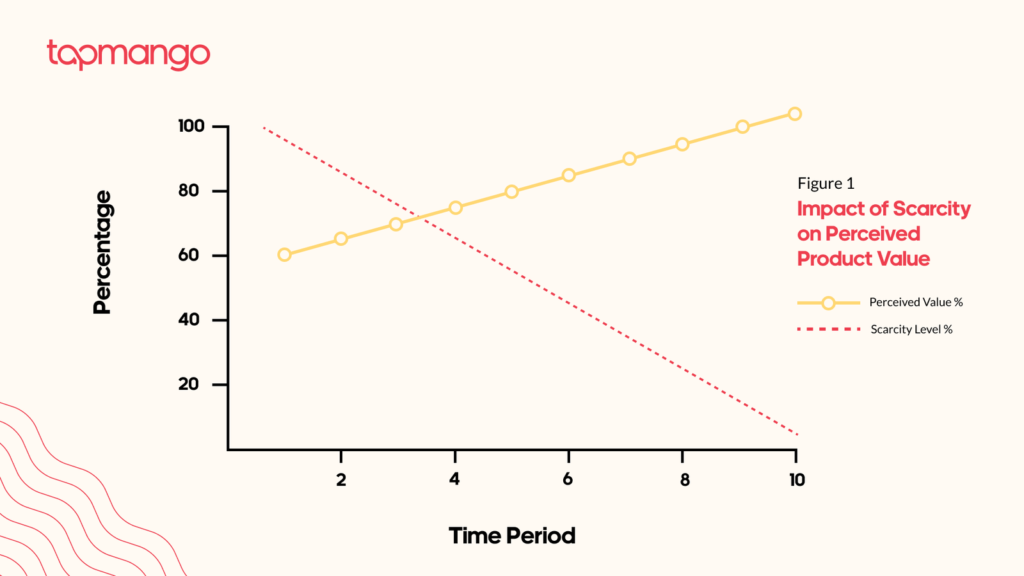
Access: The Loyalty Language of Exclusivity
What truly makes a customer feel valued? Is it another 10% discount they could get from any competitor? Or is it something deeper?
Many loyalty programs are stuck in a cycle of purely transactional rewards, focusing on points, percentages off, and discount codes.
While those incentives are great for short-term purchases, they miss a more powerful, primal driver of human behavior: the desire for exclusivity and special treatment.
That’s where the Access Loyalty Language comes in. It’s the key to making your best customers feel like insiders and part of something special, with privileges not everyone gets.
In this blog, we’ll explore how the Access Loyalty Language works, the psychology that drives it, and practical ways to create exclusive loyalty programs that strengthen emotional connection and long-term loyalty.
Exclusive Loyalty Programs: Why Humans Crave Access
The desire for access-based rewards is rooted deep in human psychology. The success of exclusive loyalty programs isn’t just about the perks themselves, but about how those perks make the customer feel about their status within a community, which is a fundamental human emotion we’re all motivated to achieve and maintain.
The Scarcity Principle and Perceived Value
Access creates status primarily through the Principle of Scarcity. When an offer, product, or experience is limited, it is instantly seen as more valuable.
Studies confirm that scarcity leads to greater perceptions of exclusivity, quality, and value, driving greater purchase intentions and a higher willingness-to-pay. When consumers recognize they are being given something rare and restricted, the reward becomes more valuable than its material worth.

From Consumption to Social Currency
Historically, status was often indicated by conspicuous consumption (displaying luxury goods). Today, conspicuous access is just as powerful. Exclusivity grants a non-monetary form of social currency.
This feeling is highly motivating to consumers. Once a customer achieves VIP status, they don’t want to surrender it, especially because it comes with tangible benefits like early product drops, priority support, and better treatment.
This powerful desire to maintain social status strongly reinforces their willingness to engage with the brand repeatedly.
Fulfilling the Need to Belong
By structuring exclusive loyalty programs around tiers, private events, and member-only communications, a business taps into the universal human need to belong to a group that holds status.
It transforms customer spending from simply buying a product to participating in a group identity. This shared privilege and sense of membership is what ultimately creates that unshakeable, powerful exclusivity that makes loyalty programs successful.
What Are Access-Based Loyalty Programs?
Access-based loyalty programs are loyalty models that grant meaningful privileges, experiences, and perks to consumers to create a sense of exclusivity. Members of access-based loyalty programs usually have to pay a subscription fee or sign up for the program in some way.
These programs don’t just focus on traditional, simple point systems or one-size-fits-all discount codes. They create a sense of exclusivity to keep members within.
Exclusive loyalty programs are built on three key mechanisms:
1. Membership Tiers
The core structure of exclusive loyalty programs is the tier system. Instead of simply offering a marginally better points conversion rate, tiers are designed to unlock genuinely better privileges. Customers move from a standard tier to Silver, Gold, or VIP to gain status and functional benefits.
2. Exclusive Offers and Inventory
Exclusive loyalty programs use scarcity to drive desire. Businesses give their top members early or access-based rewards for products or services that the general public cannot yet obtain.
Think of this as the “early bird” privilege: early product drops, pre-sale tickets to highly anticipated events, or a first-look at seasonal menu items before their public launch. This privilege drives excitement and reinforces the value of their membership.
3. Unpublished Specials
By leveraging personalized channels like SMS or email, businesses deliver “secret” offers, specials, or unique menu items that are not advertised publicly. These unpublished specials are available only to the recipient, making them feel like they are “in the know” and part of an exclusive circle.
How Do Exclusivity Perks Drive Repeat Business?
As we established before, exclusivity creates a sense of status. Consumers are willing to repeat spending to keep their sense of status and the benefits that come with it. That’s sustained engagement and VIP loyalty. Here is how exclusive loyalty programs lock in long-term retention:
Increased Switching Costs (Retention)
When a customer achieves a coveted status, such as a “Diamond Member” tier, they earn a title and a set of earned privileges. The potential loss of these benefits creates a substantial switching cost.
Customers are much less likely to move to a competitor, who would force them to start building their status from scratch. This system effectively locks in long-term retention and transforms high-value customers into permanent patrons.
Higher Lifetime Value (LTV)
Tiers are inherently aspirational. Customers are encouraged to increase their purchase frequency or average order value to not only achieve the next level of access but also to keep their current status. This structured aspiration directly boosts the customer’s overall Lifetime Value (LTV). The focus shifts from “How many points do I have?” to “What do I need to spend to get that next level of access?”
Experiential Loyalty
Transactional rewards, like a 10% coupon, are quickly forgotten. Access-based rewards, however, are often experiential. Memorable experiences reinforce brand affinity much more strongly than a simple discount ever could.
Implementing the Language: A Strategic Roadmap to Exclusive Loyalty Programs
Shifting exclusive loyalty programs from transactional rewards to limited access demands a thoughtful strategy built on clear structure, intelligent data, and focused communication.
- Designing the Tiers
The success of exclusive loyalty programs begins with architecture. Membership tiers must be designed with clear, measurable thresholds for movement. These thresholds should combine activities like total spending and visit frequency to offer multiple paths to privilege.
Crucially, the benefits for each tier must be distinct, meaningful, and genuinely aspirational. For example, a basic Level 1 might grant access to an unpublished, “secret menu” only available to members, while a top-tier Level 3 could unlock quarterly exclusive partner offers or dedicated concierge support. The goal is to make the next level feel worth the effort.
- Leveraging Customer Segmentation
Exclusivity loses its power when it feels generic. To make offers personal and non-generic, businesses must use accurate customer segmentation. This means going beyond basic data to group customers not just by their tier, but also by their purchase history, last purchase date, and product preferences.
Personalized communication is essential; an email about a limited-edition coffee blend should only go to members who regularly buy coffee. The offer should feel targeted and “just for them,” rather than a mass marketing blast.
- Cultivating Community and Events
The ultimate goal of access-based rewards is to fulfill the deep-seated human desire: “I want to feel like I’m part of something.”
To achieve this, businesses should use member-only communication channels to foster a true community feel, such as through a branded app.
Access as Acquisition: Turning Insiders into Referral Engines
While exclusive loyalty programs are primarily designed for retention, their greatest secondary benefit is the power to turn existing customers into referral machines.
Focus on creating exclusive invite programs where the current customer is the gatekeeper. Frame the referral as a special invitation into an “inner circle.” This transforms the referral mechanism into a transfer of status.
You can also set up referral campaigns where successful acquisitions result in a tier upgrade or granting access to a specific, higher-status member group for the referrer. This changes the referral to a status-driven reward, fueling the exclusivity loop that VIP loyalty is built upon.
Try TapMango’s Exclusive Loyalty Programs
The loyalty landscape has evolved, and the message is clear: chasing customers with just discounts is an outdated strategy. The language of Access moves beyond simple monetary incentives to create emotional, high-value relationships.
The best way to manage access is with exclusive loyalty programs like TapMango. Through TapMango, SMBs and mid-market brands can bring Access to life using customizable membership tiers, seamless referrals, and reward systems that get loyalty program members to keep spending.
If you’re ready to try it out, request a TapMango demo today!

